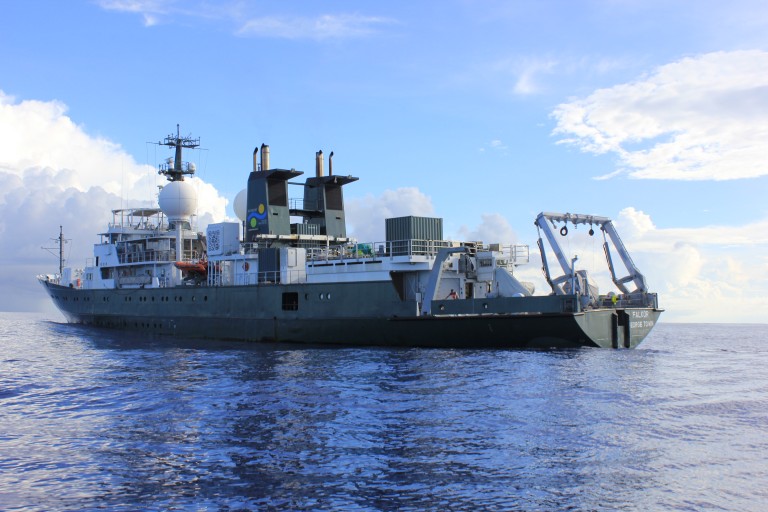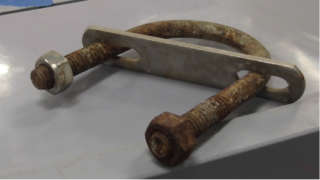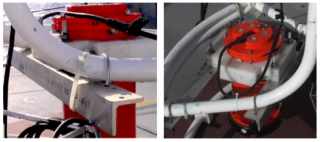
For as long as ships have been sailing the oceans, there have been observations that helped builders choose the best materials. The Falkor is built with massive amounts of metal, which then sits in a sea of salty water that wants to eat it alive. All metals tend toward corrosion, but if two different metals are touching, one will corrode first. The preferential deterioration is called galvanic corrosion. Galvanic corrosion is a concept that not only ship builders understand, but one that oceanographers take advantage of in order to protect their equipment. Way back in the day, Navy men working on ships realized that the nails they used were less likely to dissolve in particular scenarios. An important realization was that if certain metals were touching, one metal was affected far worse than the other. These were the first inklings of galvanic corrosion.
The Process

Galvanic corrosion is a powerful process involving an anode and a cathode that takes place in the presence of an electrolyte, which in oceanography is usually seawater. The more negatively charged metal acts as the anode and the positive one acts as a cathode; it’s always a relationship and their relative charges control the process. The anode dissolves into the electrolyte solution, and the cathode collects the leftovers. With regards to iron, this residue is called rust. The process can be manipulated by purposefully placing two different metals next to each other.
Anodic Scale
The anodic scale is how we determine which metals to use. The aim is to use two metals with small differences in charge. The larger the difference in charge between the two, the faster the anode will dissolve. The scale begins at zero with gold as the standard, because it has an intrinsic resistance to corrosion. If only it were easy and inexpensive to coat all ships and scientific equipment in non-reactive gold! But alas, scientists and sailors are encumbered by things like budgets, plus, gold is very heavy. So, ironically, we head to the opposite end of the scale, to the more anodic side.
Zinc is lower on the anodic scale than steel, meaning zinc is easier to oxidize or steal electrons from than steel is. It’s pretty close to steel on the anodic scale, so zinc is often used as the anode for galvanizing steel. It is also relatively inexpensive and lightweight, beneficial properties for galvanization.

To Galvanize, or Not to Galvanize
Galvanization with zinc allows galvanic corrosion to work in our favor, because zinc will corrode instead of steel. Unlike rust (iron oxide), zinc oxide actually becomes a protective coating that doesn’t flake off. If the zinc oxide layer gets scratched, it will try to fill in the gaps. Unless the layer is badly scratched or otherwise chipped off in large areas, it will continue to protect the steel. There may come a time, however, when the zinc gets wholly consumed. At this point, the steel will begin to oxidize.
Zincs on Falkor

These same galvanic oxidation principles are used in protecting Falkor and its scientific equipment, with a slight difference. Instead of coating the metal we want to protect, we use bolts and other fasteners made from zinc so the seawater will preferentially corrode them, thereby protecting the other metal touching it. These “sacrificial zincs” are easily replaced, protecting metal of the ship and the instruments from oxidation, an ever-present danger to sea-going equipment. The ADCP being used on this cruise is fastened to the CTD using sacrificial zincs pieces. Each nut and bolt seen here is easily replaceable once it becomes oxidized so that the rest of the metal will remain intact.

